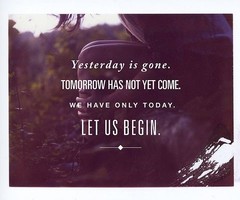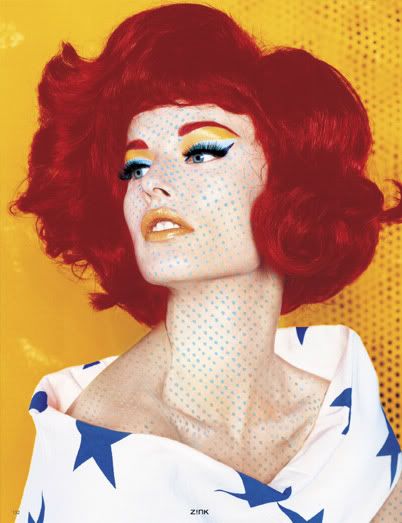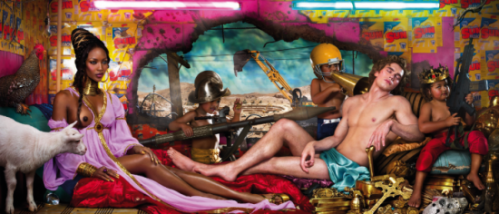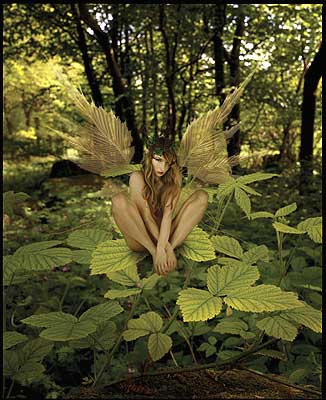It may be seen easier to write about legibility within the typography of signs and papers but in reality typography and image is everywhere we look, magazines, adverts, books, CDs, DVDs, posters, billboards, apps, websites, the list goes on. Words are seen as a powerful device but images can be seen as even more powerful. So what effect does this have when teamed together? Magazines overload us with type and image, connecting the two together to create influential selling tools, to make money, much like the dominance of advertising. From simple portrait photography with strong, bold, fairly large text on a jet black background, which works effectively in drawing the eye across the page from the red, perfect lips of the model to the other side of the page where the lipstick to make your lips too look that good stands, with the bold red caption. Chanel are successful in understanding how a magazine works, that you’ll first see the woman on the right hand side as you open the magazine, along with the power of image and texts and product which leads to a successful advertising. That is what is extremely successful throughout the magazine industry, and is what makes buyers buy and advertisers/companies sell as we can see time and time again through each magazine spread. For instance Channel in the ‘Rouge Allure’ advert use a simple typeface, relating colour to the colour of the product, the lipstick, and using the contrast of white against the black background for other type, depicting that the red will hugely enhance legibility. Also there is little writing on the advert, so as to get to the point as quickly as possible because most people just flick through magazines and needs to penetrate the reader as soon as possible and be to memorable. It is unarguable that this technique works as it is seen in every possible way on every possible surface used to advertise, although tweaked for different medias, the idea stays the same and it sells. It may be seen as boring and reproduced but we still go out and buy what’s out there with clever advertising slogans and appealing shades of lipstick interspersed with the beautifully photo-shopped photographs. Image and text is all around us and is put in the simplest way possible, with the simplest legibility because it’s all about quick fire messages as in today’s era we are overloaded with masses of information and everybody wants their information to stick.
Tone of voice is often something that can be seen as something to comply with or something to break in all forms from how words are placed on a page, to what font they are in etc. One area that particularly interests me is how font is used in image and where it is placed and if it in fact has anything to do with the image, and how words and images are interwoven together. There’s a website I love called ‘wehearit’, I guess you would call it a visual blog and mass of ideas, but amongst that you can find thousands of uses of tone of voice and image and text. One way of interlinking text over an image, for instance in the ‘yesterday is gone’ image, is to use a different font for every line, it may not be seen as conventional and as legible as some typography out there but it creates an interesting effect upon what you are reading, also through using different size of font it draws your eye to what the creator wanted you to remember and to be most significant from what is being said. By having font in the center of an image it also shows that they want the text to be the main focus point for the picture, as maybe what is being said is more important than the image itself. Another example where the text is the main focal point in an image is in the ‘I used to sleep at night’ picture, your eye is drawn to the white against the darker ‘rave scene’ background photograph. An example of this when maybe it hasn’t been so successful is in the ‘boy you had your chance’ image. The text although well placed across the entire image, so as to portray that the image has little importance compared to what is being said, it disappears into the picture in the background, which in turn makes it illegible and which then defeats the point of the image as a whole. But when text is used successfully, I think it can have a powerful effect even on maybe less ‘interesting’ images.



















































